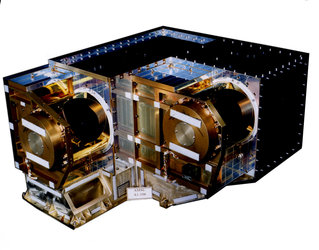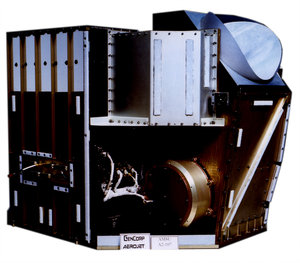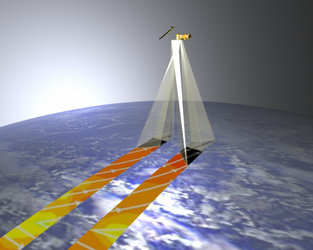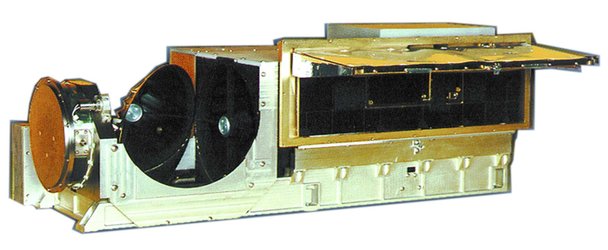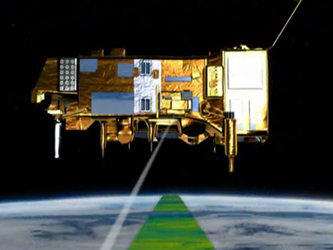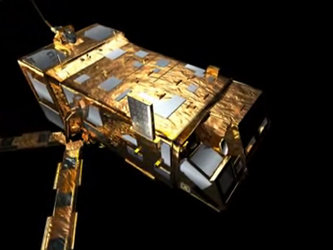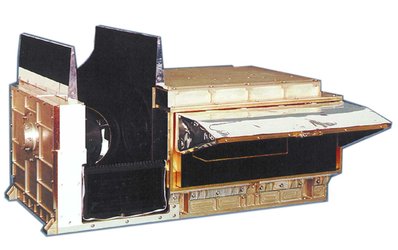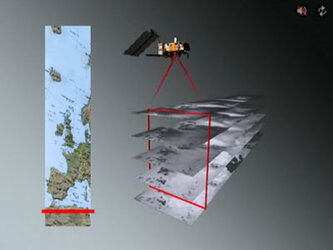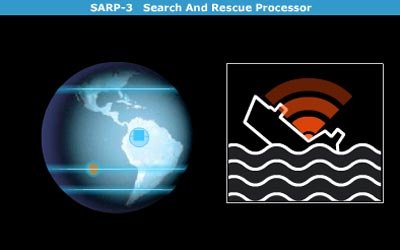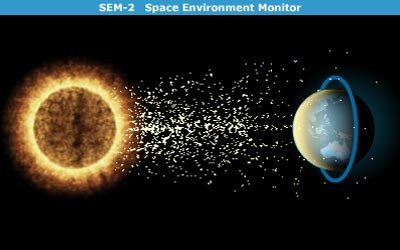A-DCS components
Receiver Processing Unit
The receiver linearly converts the incoming signal to an intermediate frequency that is applied to the input of the Search Unit and to a software equivalent to twelve stand alone Data Recovery Units (DRUs). The Search Unit is basically a spectrum analyser that uses a Fast Fourier Transform to cover the 110 kHz operating frequency range.
The receiver characteristics are:
| Centre Frequency | : 401.65 MHz |
| Antenna Polarisation | : RHCP (Right Hand Circle Polarization) |
Control Unit
The Control Unit uses the incoming signal level and frequency information provided by the Search Unit for the assignment of an equivalent DRU to a particular receiver output signal.
Data Recovery Unit
Processing software performs the following signal functions:
- acquisition of the carrier
- signal demodulation
- bit synchronisation
- frame synchronisation
- Doppler counting
- time tagging
Management software performs the formatting of the data.
Telemetry Encoder and Memory
The telemetry formatter interrogates the buffer in the equivalent DRUs. When the buffer is full, the encoder sends a command to shift the bits into memory. When the encoder receives a data transfer request from the satellite, it transfers the data out of the memory to the satellite.
Transmitter
The A-DCS instrument will be able to send messages to the users' mobile terminals through its UHF transmitter (465.9875 MHz bi-phase PM 200 or 400 bps).
The user requests will be received at the Toulouse facilities of the Collecte Localisation Satellites (CLS), the Centre National d'Études Spatiales (CNES) subsidiary in charge of the operations of the ARGOS system. These requests will indicate the identification of the destination terminal, the message to be transmitted at 400 bps (or 200 bps) and the time constraints (if any).
Taking into account the above and the status of the ARGOS system, the Downlink Message Management Centre (DMMC) will prepare the uploading of the request to the instrument through one of the Master Beacons of the ARGOS system.
The Master Beacon that is best situated is selected by the DMMC and the message to be up-linked is sent to this Master Beacon through a terrestrial public network. This up-link message contains the information necessary to prepare the down-link message to be sent to the user terminal.
The up-link message is an ARGOS message, the content of which is analysed upon reception by the instrument which in turn prepares the down-link message to be included in the down-link HDLC bit stream transmitted by the UHF transmitter.
In summary, the function described is independent of the satellite operations and has no impact on them, e.g. the down-link is permanent and when there is no down-link message, the down-link transmits filler code.
Switching on / off of the A-DCS transmitting function is made through the MetOp command and control centre (ground segment).
The A-DCS has a cold internal full redundancy. The selection of either the nominal or the redundant function for the RPU or the TXU is performed by commands coming from the satellite.





